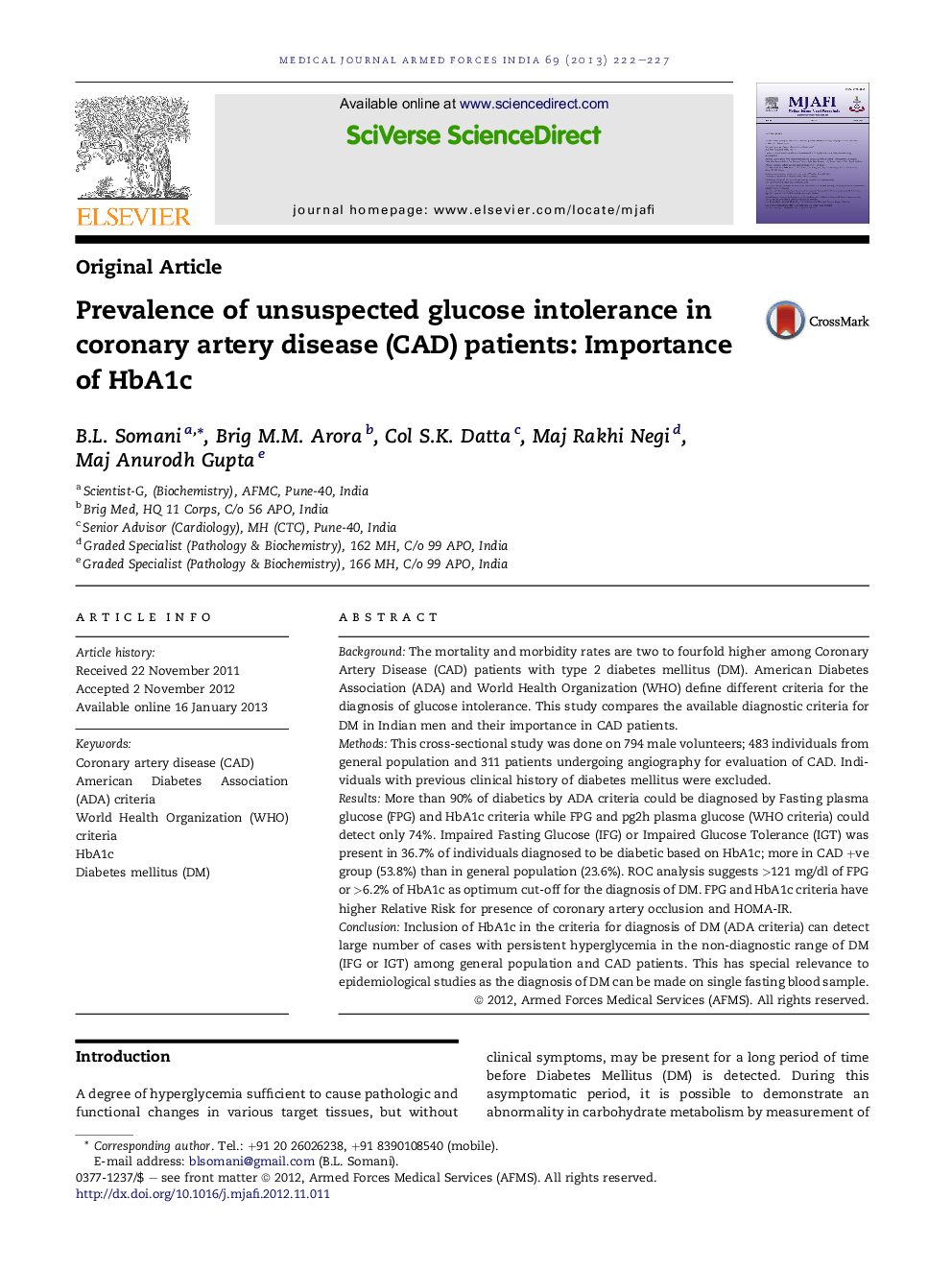| Article ID | Journal | Published Year | Pages | File Type |
|---|---|---|---|---|
| 3161775 | Medical Journal Armed Forces India | 2013 | 6 Pages |
BackgroundThe mortality and morbidity rates are two to fourfold higher among Coronary Artery Disease (CAD) patients with type 2 diabetes mellitus (DM). American Diabetes Association (ADA) and World Health Organization (WHO) define different criteria for the diagnosis of glucose intolerance. This study compares the available diagnostic criteria for DM in Indian men and their importance in CAD patients.MethodsThis cross-sectional study was done on 794 male volunteers; 483 individuals from general population and 311 patients undergoing angiography for evaluation of CAD. Individuals with previous clinical history of diabetes mellitus were excluded.ResultsMore than 90% of diabetics by ADA criteria could be diagnosed by Fasting plasma glucose (FPG) and HbA1c criteria while FPG and pg2h plasma glucose (WHO criteria) could detect only 74%. Impaired Fasting Glucose (IFG) or Impaired Glucose Tolerance (IGT) was present in 36.7% of individuals diagnosed to be diabetic based on HbA1c; more in CAD +ve group (53.8%) than in general population (23.6%). ROC analysis suggests >121 mg/dl of FPG or >6.2% of HbA1c as optimum cut-off for the diagnosis of DM. FPG and HbA1c criteria have higher Relative Risk for presence of coronary artery occlusion and HOMA-IR.ConclusionInclusion of HbA1c in the criteria for diagnosis of DM (ADA criteria) can detect large number of cases with persistent hyperglycemia in the non-diagnostic range of DM (IFG or IGT) among general population and CAD patients. This has special relevance to epidemiological studies as the diagnosis of DM can be made on single fasting blood sample.
